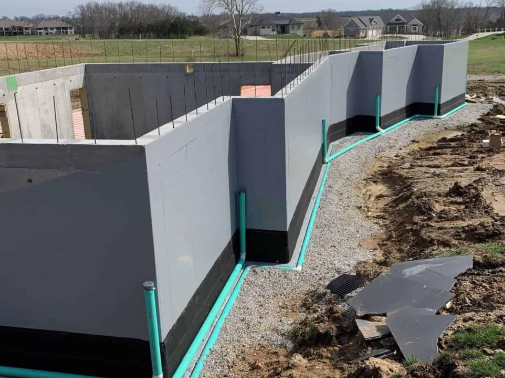What Is a Concrete Foundation?
Concrete foundations are the cornerstone of modern construction, laying the groundwork for residential and commercial buildings. These foundations distribute the load of structures evenly across the ground, ensuring stability and durability. By effectively balancing the weight, they prevent uneven settling and structural issues. Various methods are employed in constructing these foundations, including slab-on-grade and pier-and-beam systems. Koehncs.com specializes in creating resilient and robust concrete foundations tailored to specific project requirements.
The Importance of Concrete Foundations
The significance of concrete foundations in construction cannot be overstated. They are pivotal to a building’s longevity and safety. These foundations resist natural forces such as wind, seismic activities, and water seepage, ensuring a structure remains sound for years. Concrete’s inherent strength and durability make it an ideal material for this purpose. For example, a well-constructed concrete foundation can prevent catastrophic failures in earthquake-prone areas. This structural integrity underscores why quality foundations are non-negotiable in ensuring any building project’s long-term stability and safety.
Innovative Techniques in Concrete Foundation Construction
Recent advancements in construction technology have paved the way for more robust and resilient concrete foundations. Innovative techniques, such as self-healing concrete, have revolutionized the industry. This technology involves embedding bacteria in the concrete mix, which produces limestone to seal cracks when they come into contact with water, thus extending the structure’s lifespan. Another significant innovation is the use of fiber reinforcement, which improves the flexibility and tensile strength of the concrete, making it more resistant to cracking and damage. These advanced methods are transforming the construction landscape, making foundations more durable and cost-effective in the long run.
Sustainable Practices in Concrete Foundation
The construction industry is increasingly prioritizing sustainability. This shift includes using recycled materials and minimizing carbon footprints in concrete production. For instance, integrating green cement and supplementary cementitious materials like fly ash and slag reduces greenhouse gas emissions associated with traditional cement production. These eco-friendly practices benefit the environment and lead to long-term economic advantages by reducing material costs and enhancing energy efficiency. Incorporating sustainable methods into constructing concrete foundations is crucial in working towards sustainability objectives within the industry.
Common Challenges and Solutions
Building concrete foundations presents several challenges, such as poor soil quality, water control issues, and adverse weather conditions. These challenges can complicate the construction process and compromise the quality of the foundation. However, modern techniques and materials are helping to mitigate these issues. Advanced project management and precise planning ensure timely progress. Techniques such as soil stabilization and waterproof membranes enhance the foundation’s resilience. Additionally, innovative materials like high-performance concrete improve foundations’ overall quality and durability, ensuring they can withstand various environmental and structural stresses.
Real-World Examples of Successful Projects
Numerous successful construction projects around the globe illustrate the benefits of innovative concrete foundation techniques. Notable examples include skyscrapers in urban environments and significant residential developments. These projects showcase how advanced methods and materials can lead to superior performance and longevity. For instance, the use of high-strength concrete in the foundation of the Shanghai Tower allows the building to withstand extreme wind and seismic forces. Similarly, residential projects in flood-prone areas have benefited from elevated, waterproof concrete foundations, ensuring the homes remain safe and secure. These real-world examples serve as benchmarks for future construction endeavors, demonstrating the effectiveness of modern techniques.
Choosing the Right Concrete Foundation Specialist
Selecting the right specialist is crucial for the success of any construction project. When choosing a concrete foundation expert, consider their level of experience, customer reviews, and adherence to the latest industry standards. Experts with a demonstrated history and skill in sophisticated building methods are expected to produce top-notch outcomes. Additionally, reputable specialists prioritize safety and regulatory compliance, ensuring the project meets all necessary standards. Ensuring thorough research in choosing a specialist guarantees that your foundation remains solid and reliable, offering steady and safe support for the entire building.
Future Trends in Concrete Foundation Technology
The future of concrete foundation technology is promising, with emerging trends such as smart concrete and advanced 3D printing techniques. Smart concrete incorporates sensors that monitor structural health in real time, providing valuable data on the foundation’s condition and enabling early detection of potential issues. Advanced 3D printing techniques allow for the rapid and precise construction of complex foundation shapes, reducing construction time and labor costs. These innovations could revolutionize building foundations, offering more innovative, efficient, and durable solutions. As these technologies keep advancing, they will have a crucial impact on determining the construction industry’s future.

